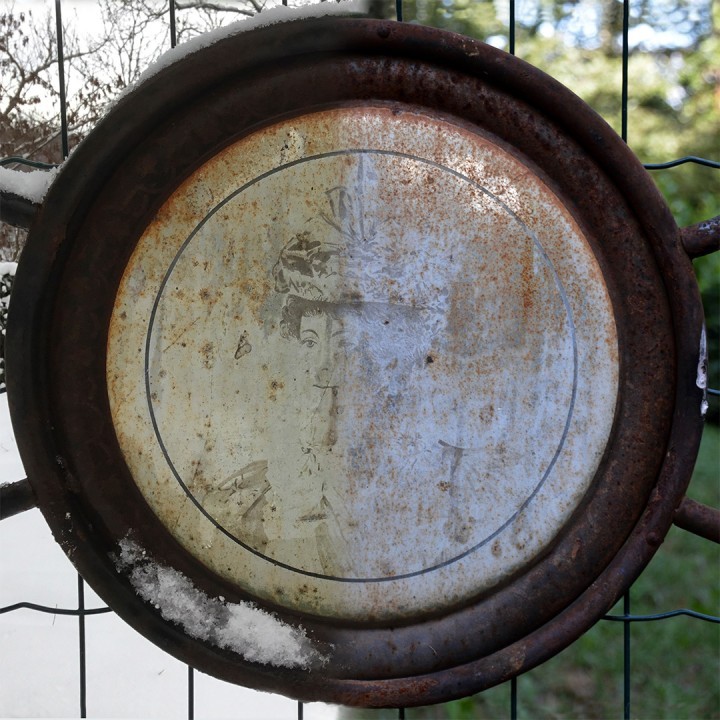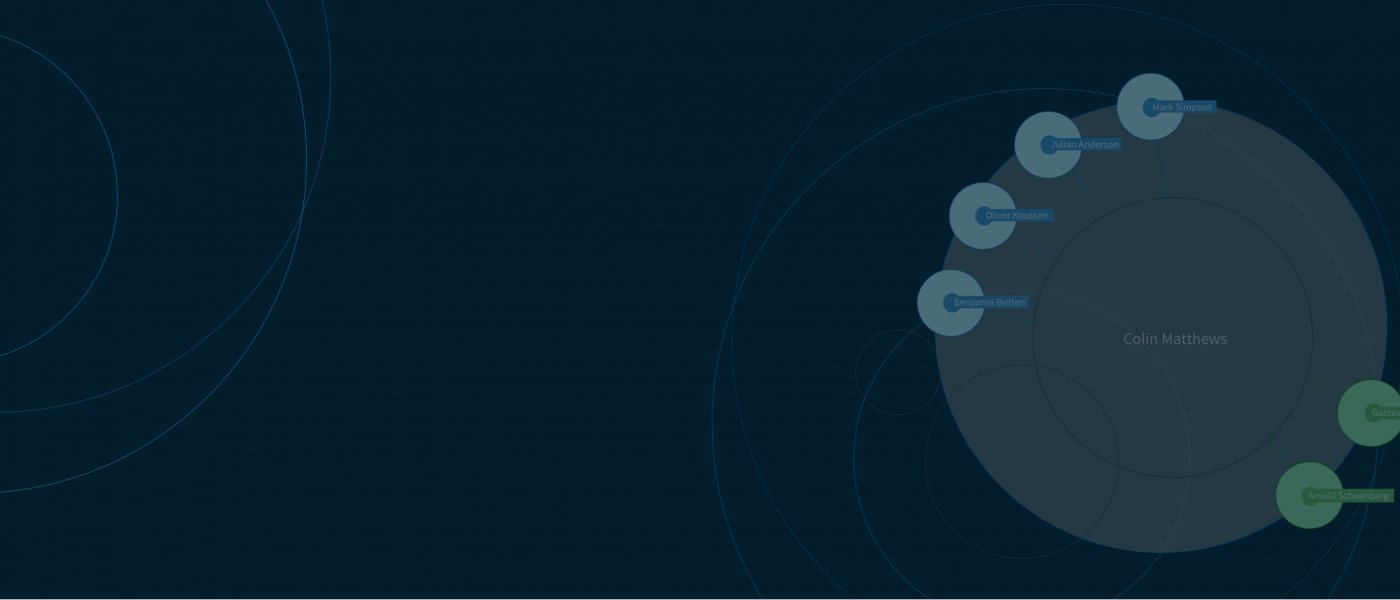Trace: Maya Verlaak on making music with friends
14th February 2024
Features Birmingham Record CompanyMaya Verlaak writes about Trace, her new album of solo pieces for friends
I started thinking about making this album after realising that a lot of my larger ensemble pieces are all well documented, but I don’t have any good recordings of solo pieces written for friends. During the pandemic the Dutch government provided financial support to art organisations such as iii (the Instrument Inventors Initiative in The Hague) of which I am a member. So, with this small amount of money in my pocket and a plan in my head, I set to work on an album.
I started with a piece called All English Music Is, composed for Howard Skempton in 2016. It is a score that changes over time. What Howard sees is a canvas with a stave drawn on it, with little black sponges that resemble music notes resting on top. Underneath the canvas is a speaker. When Howard plays his accordion the sound of the instrument goes directly to the speaker, making the canvas vibrate. These vibrations make the little black sponges move around on the stave, creating ever-changing music notation. The piece is thus quite difficult to perform. It begins with the Greensleeves melody, but every time Howard loops through the tune it sounds different because his playing changes the notes on the stave. The Greensleeves melody isn’t particularly important in this piece. The piece is really about how a melody changes over time through the actions of a performer.
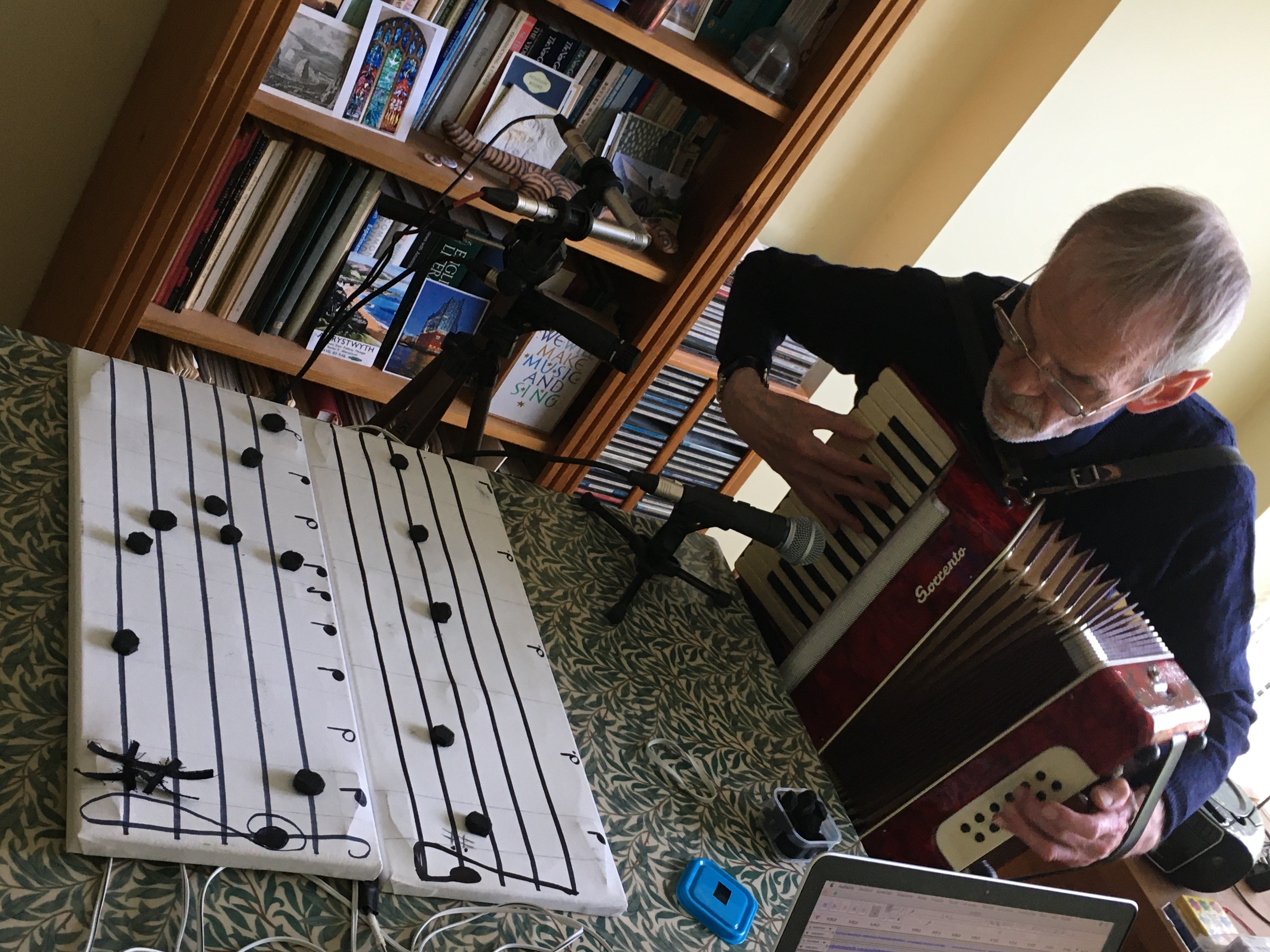
In 2018 Kate Halsall asked me if she could also perform All English Music Is. I gave her all the things that she would need for it, and she performed it a couple of times and really made the piece her own. So, for this album I thought it would be nice to record both Howard and Kate’s version. Kate uses a different melody which made it interesting to include both on the album. I travelled to England in May 2022 and stayed with Kate Halsall in Penrith for two days. We talked a lot and tried the melody several times. We changed it and recorded several versions until we were happy with it. The performance practice is interesting here for me. The player needs to find what is the most important thing in the piece for them, especially as I leave decisions about how to interpret the melody up to the individual. It was fascinating to then visit Howard in his house in Leamington Spa a couple of days later and to record his version. We recorded several takes there and took the time to listen to all the recordings and discuss what we liked the most. We listened carefully to the way he performed the piece and how he dealt with the problems that I’ve created with these moving notes.
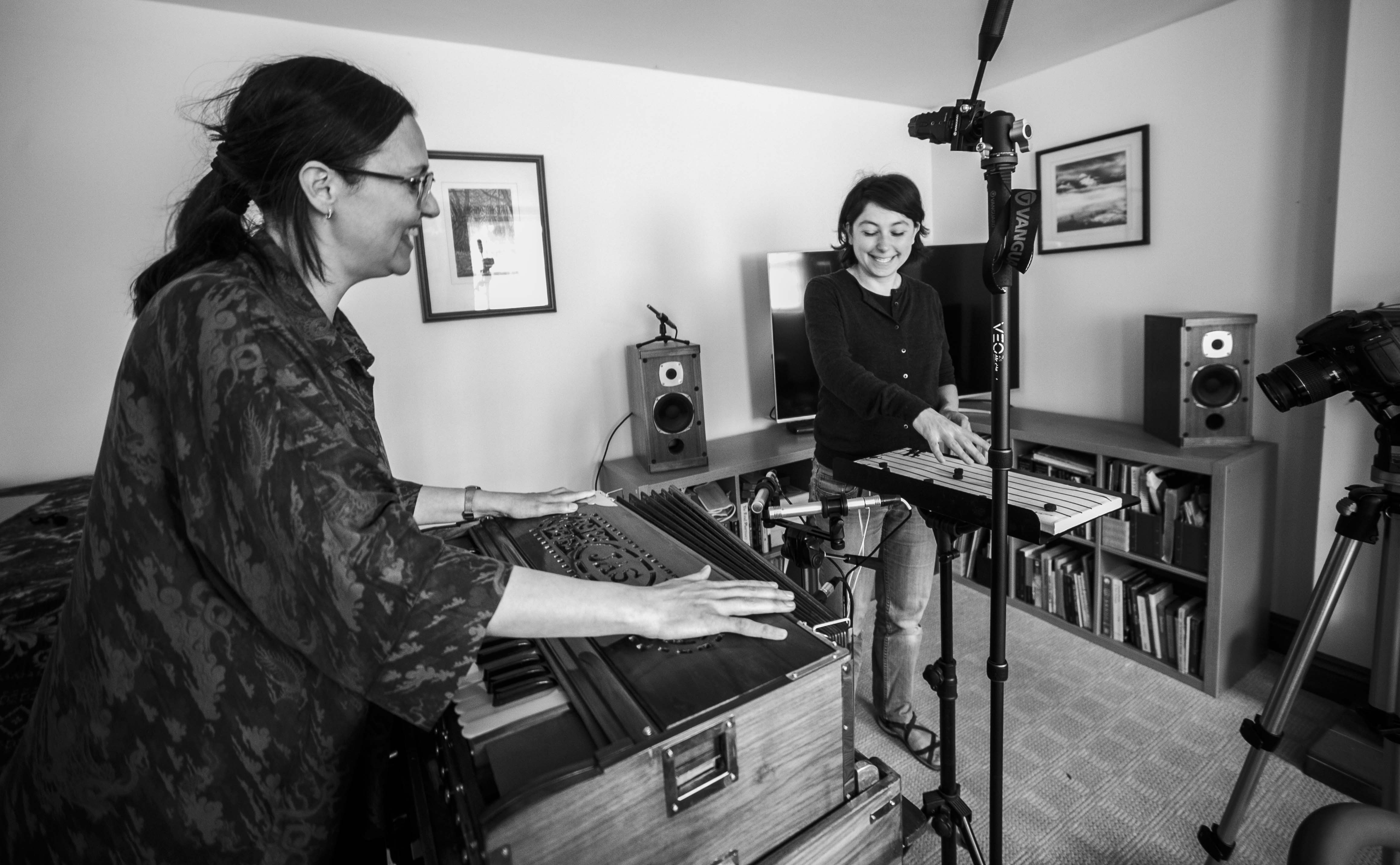
My next journey took me to London to record Anticipation, composed for Paul Zaba in 2019. I stayed for a couple of days at his house, and he showed me an instrument called a Shruti Box. I thought that this instrument should have a place in the piece too. The piece was originally for voice, harmonica and accordion, but I decided to replace the harmonica with the Shruti Box so that Paul could play and sing at the same time. The accordion part for Anticipation was recorded separately back in my home country of Belgium by and Luca Pignata. Luca is a great person and a fantastic performer too.
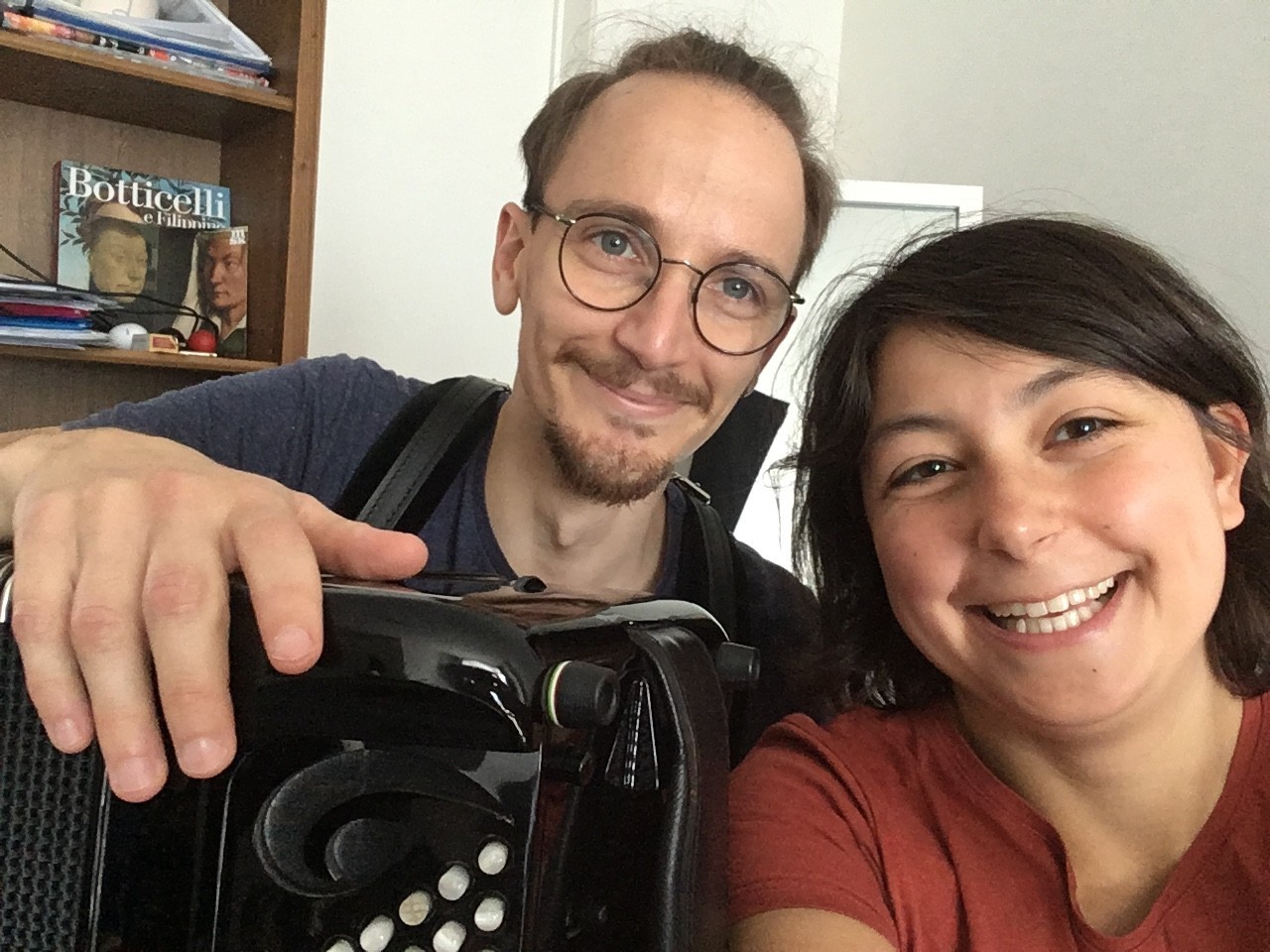
After all of this I started thinking about creating some new pieces for the album. Pianist Kate Ledger was holidaying in Brussels, so we met up to talk about collaborating. It was a great conversation over a couple of delicious Belgian beers, and we created a concept for a piece. Then in September 2022, I visited her in York and stayed quite some time. I felt like a composer-in-residence at her house! I wrote a fairly complex piece for her because I’m very interested in giving insight into the complexities of a composition, and I felt I was able to do that with her. In this piece, Whispers, a computer with live electronics interacts with Kate at the piano. Kate needs to sing a note, which the computer receives and displays as a black dot on the screen. As soon as she has sung the note she takes a deep breath, which makes a second black dot appear on the screen that moves upwards when she breathes. Then she breathes out and positions this second black dot. By doing this she creates an interval between the first and second dots. The game is that Kate needs to guess which pitch the second dot will be. She plays this second note on the piano and depending upon how wrong she is she generates a different harmonic series for that particular pitch. Every time she plays that same note again, she builds up a whole new harmonic series for it. The whole idea is not that Kate needs to guess the correct note, but that she can be in control of her mistakes and create her own unique sound-world. This process happens constantly throughout the piece. The more she understands the system, the more control she has over the sound-world. There is even the potential for her to make mistakes on purpose! Kate played Whispers for hours, but we decided that a 20-minute piece would suffice for the album.
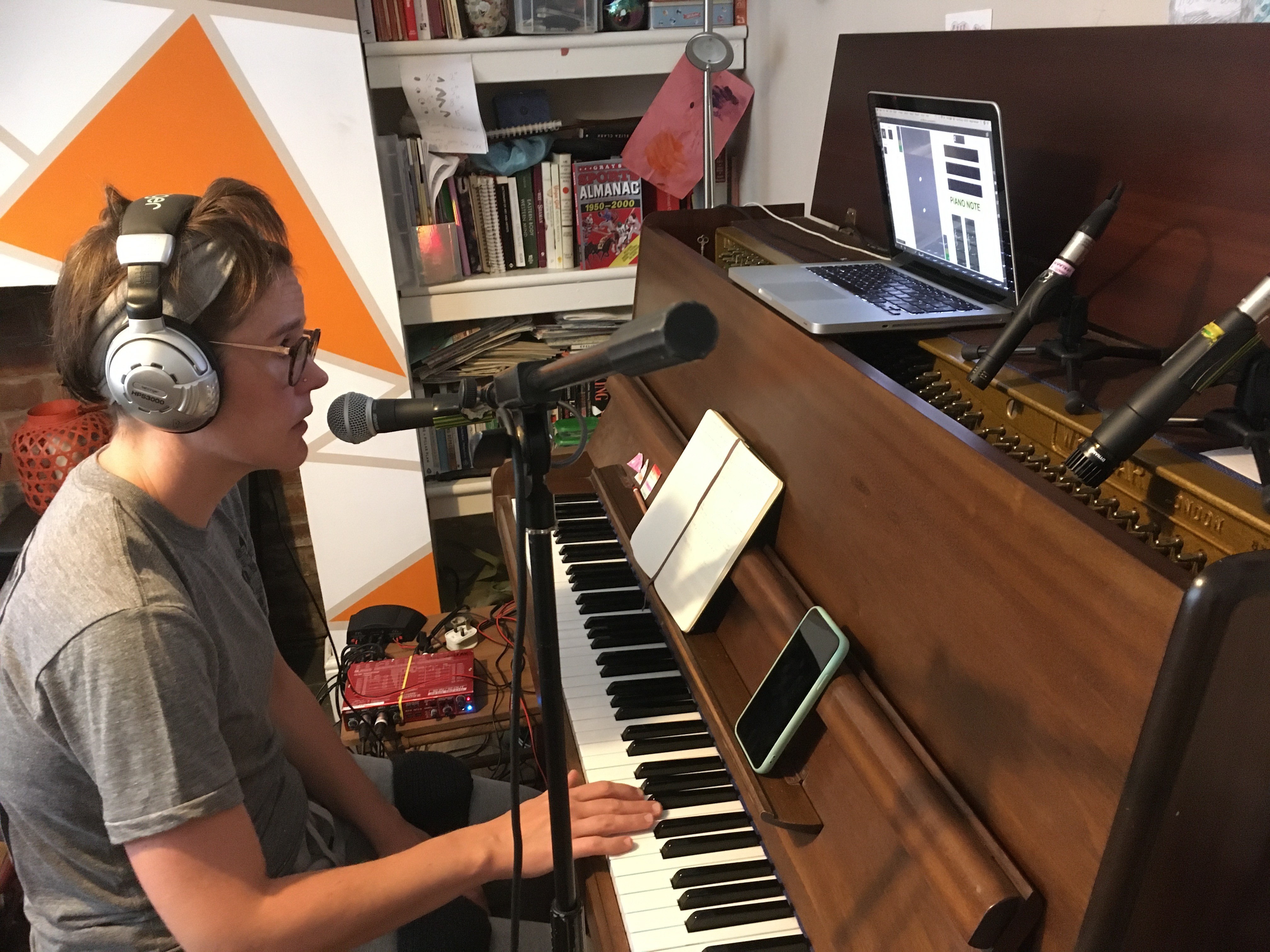
Back in Antwerp where I live, I met a trombone player called Thomas Moore. I started working on a piece for him called Mutations. I visited him at his home, and he showed me some different performance techniques as well as all his many trombone mutes. He explained that when he positions his mute on the trombone he has to slightly modify his pitch to avoid it going out of tune. I was very excited about the idea of not correcting the tuning of each note and developed a concept from this. I started to think about words that contain silent letters (perhaps we could call them muted letters), and how I could write out words whilst omitting the silent letters to see how they could be pronounced differently. I gave Thomas a list of words and I asked him to read both the conventional spelling and the modified spelling without the silent letters. Obviously they sounded very different! I then made a computer programme which contained all the recordings of Thomas reading the list of words. We hear these words separated from each other and via the computer programme Thomas brings the words closer together depending upon how quickly he tunes a note. He moves through the series of words, going through a process of moving words closer together through tuning pitches on his trombone using different mutes. Mutations has a clear ending; the live interactive computer programme triggers a melody at the end created from the way in which Thomas read the words.
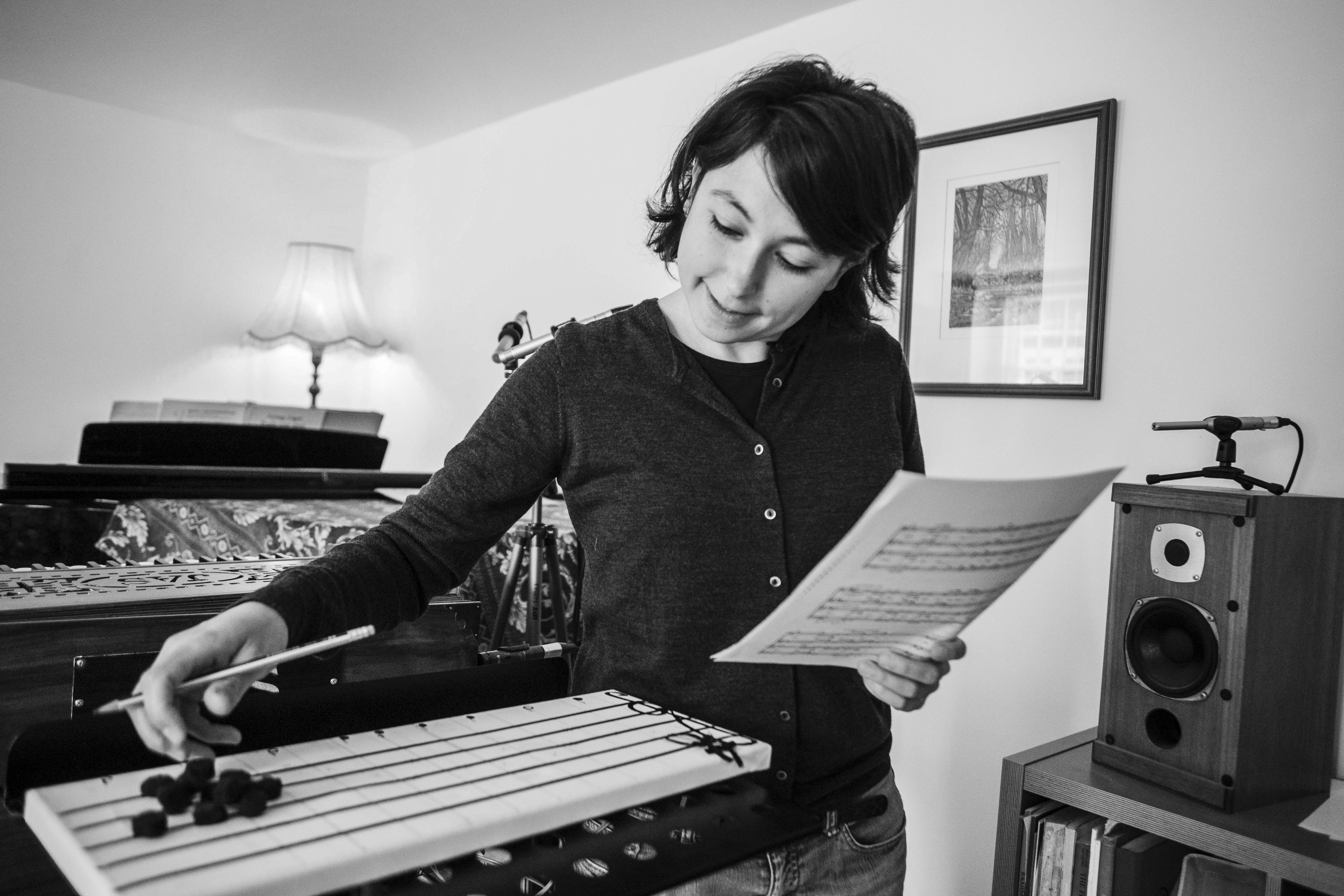
The final piece that I recorded was Trace for Joseph Kudirka. Joe and I are old friends. During the pandemic he kept himself busy by asking his friends to compose music box pieces for him. He enjoys the intricate process of punching holes in little strips of paper which he then feeds through his music box to make the sounds. After the lockdown he had accumulated lots of pieces composed especially for him, which he performed in different venues on a music box tour of Europe. It made a lot of sense for me to add my own music box composition for Joe to my album. I wanted to record it at his house in Berlin so that it would conform to the domestic aesthetic of the album. Joe is required to sing in this piece, but the vocal part is quite free; I didn’t write down the notes but I asked Joe to think about the resonances created by the instrument. He must play a series of chords quite quickly on the music box, and there is a hidden melody within the resonances of these chords. I wanted him to think about what that hidden melody could be.
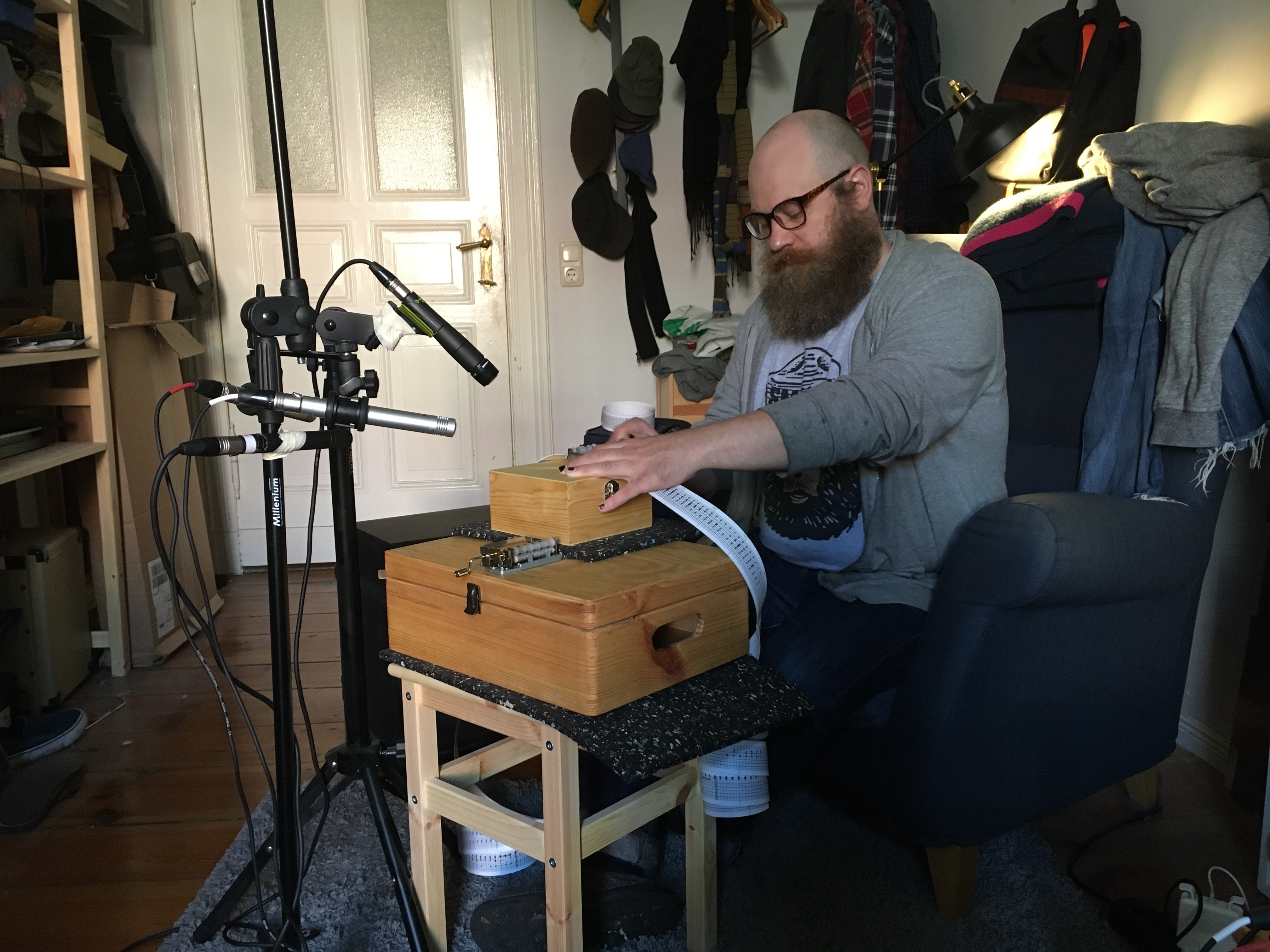
I’m really happy with how everything went during the recording process of this album. I’m also happy that I stayed true to my concept and visited each musician in their own home to record the tracks. The image on the cover of the album reflects the concept for the final track: it’s a picture I took in the snow in Italy in 2018 of a farmyard fence. However, it isn’t a normal fence, rather it’s an old bedframe with a picture of a woman on it. I saw the fence again several years later and noticed that the picture had almost completely disappeared through a process of weathering. I took a second picture and then combined the two to make the cover. Trace, the title track, is so named because in the piece Joe tries to find traces of hidden melodies. But in fact, all the musicians I work with leave their own traces on the music I write for them.
'Trace' is release on 16 February by Birmingham Record Company distributed by NMC.
Main image credit Victoria Wai.
